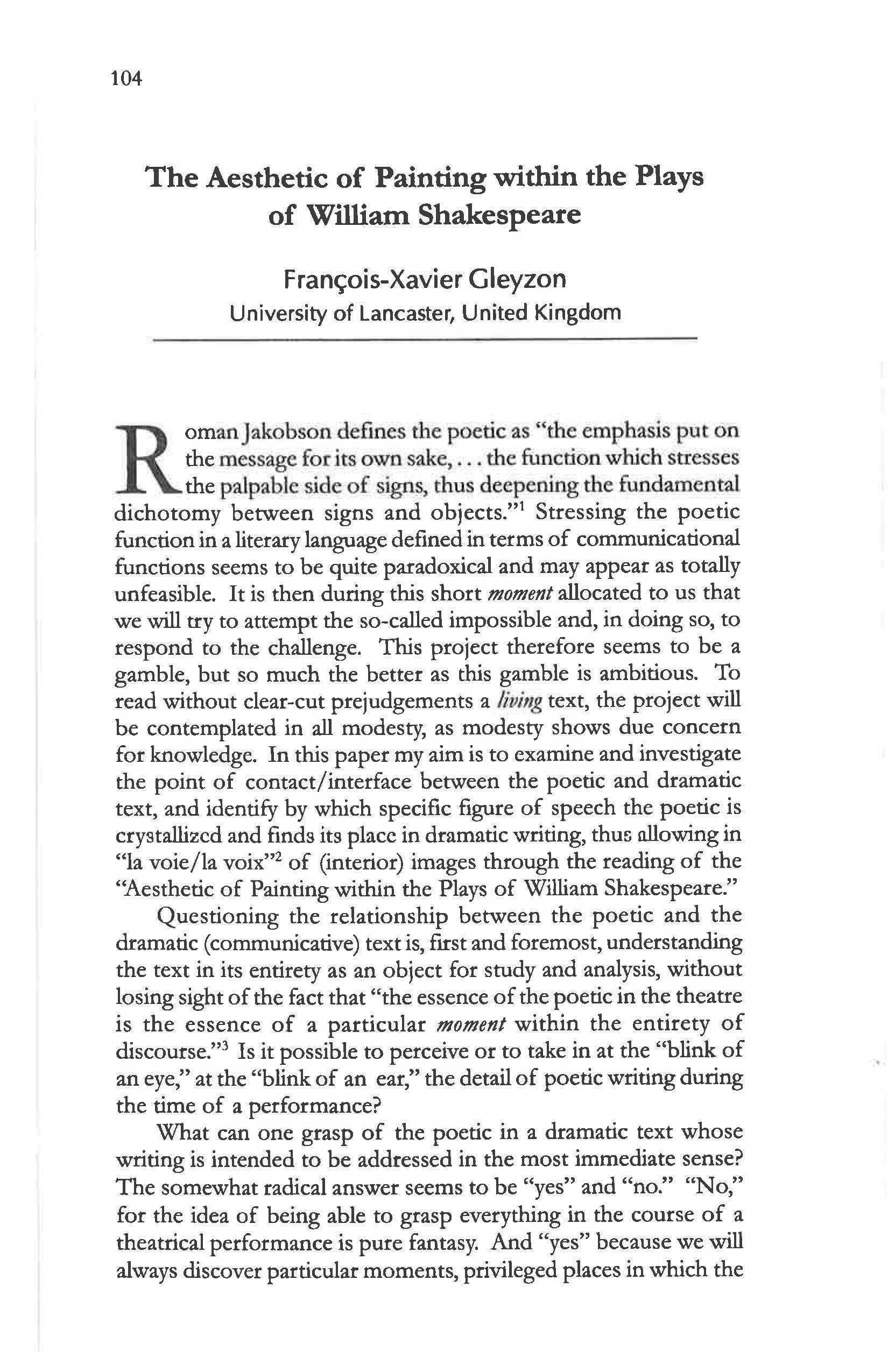The Aesthetic of Painting within the Plays of William Shakespeare
Main Article Content
Abstract
Roman Jakobson defines the poetic as “the emphasis put on the message for its own sake,…the function which stresses the palpable side of signs, thus deepening the fundamental dichotomy between signs and objects.”1 Stressing the poetic function in a literary language defined in terms of communicational functions seems to be quite paradoxical and may appear as totally unfeasible. It is then during this short moment allocated to us that we will try to attempt the so-called impossible and, in doing so, to respond to the challenge. This project therefore seems to be a gamble, but so much the better as this gamble is ambitious. To read without clear-cut prejudgments a living text, the project will be contemplated in all modesty, as modesty shows due concern for knowledge. In this paper my aim is to examine and investigate the point of contact/interface between the poetic and dramatic text, and identify by which specific figure of speech the poetic is crystallized and finds its place in dramatic writing, thus allowing in “la voie/la voix”2 of (interior) images through the reading of the “Aesthetic of Painting within the Plays of William Shakespeare.”
